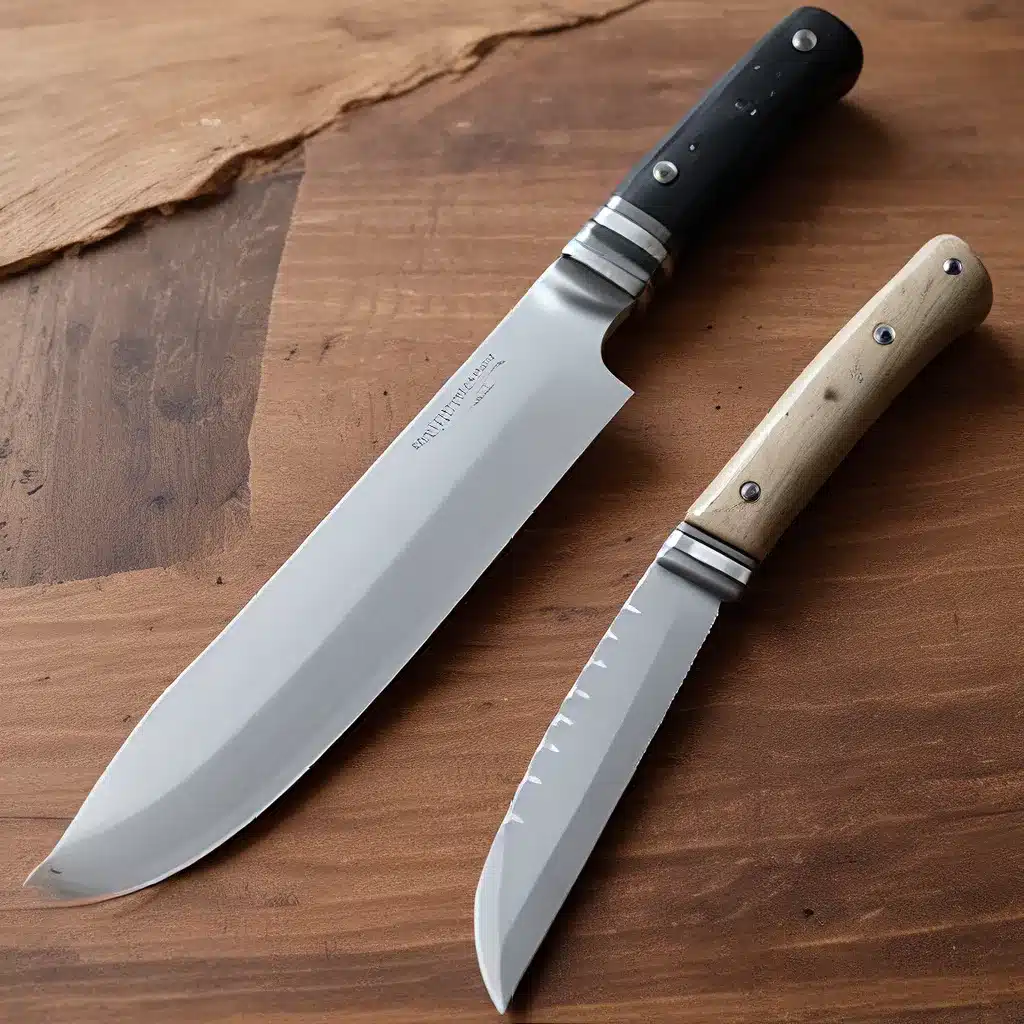
As a self-professed knife enthusiast, I’ll admit I used to be one of those people who would let my blades dull to the point of frustration. It’s easy to get caught up in the day-to-day grind and neglect the simple act of maintaining our trusty kitchen companions. But let me tell you, once I discovered the joys of proper knife sharpening, my culinary world was forever transformed.
The Importance of Sharp Knives
Picture this: You’re whipping up your signature dish, dicing onions with reckless abandon, and suddenly, your knife just won’t seem to cut through the tender flesh. Instead of a clean, effortless slice, you’re left with a ragged, torn mess. Frustration sets in, and you start to wonder if you should just invest in a new set of knives. Sound familiar?
Well, my friend, the solution to your woes lies not in a costly knife replacement, but in the art of sharpening. Sharp knives aren’t just a luxury; they’re a necessity for any serious home cook or professional chef. Not only do they make meal prep a breeze, but they also reduce the risk of accidents and injuries. After all, a dull knife requires more force to get the job done, increasing the chances of slips and cuts.
The Sharpening Spectrum: Exploring Your Options
When it comes to knife sharpening, the options can be overwhelming. From electric sharpeners to manual whetstone systems, the choices seem endless. But fear not, I’m here to guide you through the pros and cons of each method so you can make an informed decision.
| Sharpening Method | Pros | Cons |
|---|---|---|
| Electric Sharpener |
– Fast and convenient – Consistent results – Suitable for beginners |
– Can be aggressive and remove too much metal – Requires electricity – Less control over the sharpening process |
| Manual Whetstone |
– Allows for precise control – Can achieve a very sharp edge – No electricity required |
– Requires more skill and practice – Time-consuming – Need to keep the stone wet |
| Handheld Sharpener |
– Portable and easy to use – Suitable for quick touch-ups – No setup required |
– Less control than other methods – May not produce as sharp an edge – Potential to damage blades if used improperly |
| Sharpening Steel |
– Inexpensive – Can be used frequently – Helps maintain an edge |
– Does not actually sharpen the blade – Requires some technique to use effectively – Won’t restore a badly dulled knife |
As you can see, each sharpening method has its own unique advantages and drawbacks. The key is to find the one that best suits your needs, skill level, and budget. If you’re a beginner, an electric sharpener or a handheld model might be the way to go. But if you’re looking to achieve that razor-sharp precision, a whetstone system is hard to beat.
Mastering the Whetstone: A Zen-Like Experience
I’ll admit, the first time I tried sharpening with a whetstone, it was a bit daunting. But once I got the hang of it, I fell in love with the process. There’s something almost meditative about the rhythmic back-and-forth motion, the feel of the blade gliding across the stone, and the satisfying shink as the edge is honed to perfection.
Instructional videos can be incredibly helpful when learning the whetstone technique, but ultimately, it’s a skill that requires practice and patience. Start with a coarse grit stone to quickly restore a dull edge, then move to a finer grit to refine and polish the blade.
One of the key tips I’ve learned is to maintain a consistent angle as you glide the knife across the stone. This ensures an even, uniform edge. And don’t be afraid to experiment with different techniques – some people prefer to sharpen the entire blade, while others focus on just the edge.
Caring for Your Knives: Beyond Sharpening
Of course, sharpening is only one part of the equation when it comes to maintaining your knife collection. Proper storage and handling are also crucial for keeping your blades in top condition.
Always store your knives in a protective sheath, block, or magnetic strip to prevent the edges from getting accidentally knocked or scratched. And when it comes to cleaning, avoid the dishwasher at all costs! Hand-wash your knives with a mild soap and dry them thoroughly to prevent rust.
Regular professional sharpening is also a good idea, especially for your most frequently used blades. Even with careful home maintenance, the edges will eventually need a more thorough refinishing.
The Joy of a Sharp Blade
As I mentioned earlier, the transformation that occurs when you start caring for your knives is truly remarkable. Tasks that used to feel like a chore suddenly become a pleasure. Slicing through tomatoes, julienning carrots, and filleting fish all become effortless and satisfying.
But the benefits go beyond just efficiency in the kitchen. There’s a certain pride and confidence that comes with wielding a razor-sharp blade. You’ll feel more in control, more connected to the process of food preparation, and more capable of tackling any culinary challenge that comes your way.
So, what are you waiting for? Grab your whetstones, your sharpening steels, and your honing rods, and get to work reviving the edges of your beloved knives. Trust me, your taste buds (and your fingers) will thank you.


